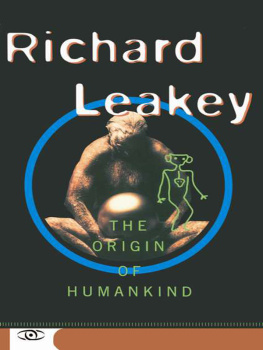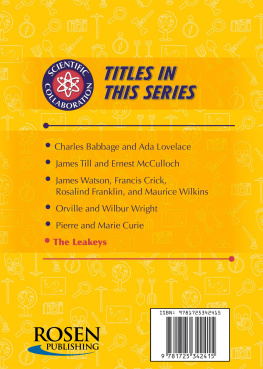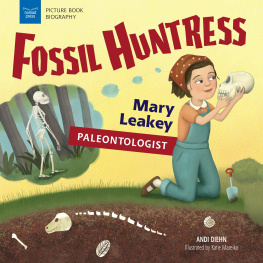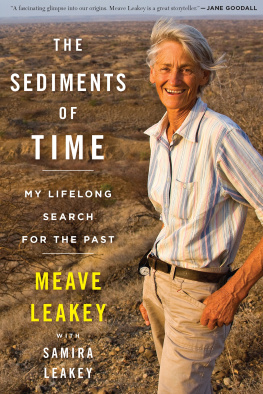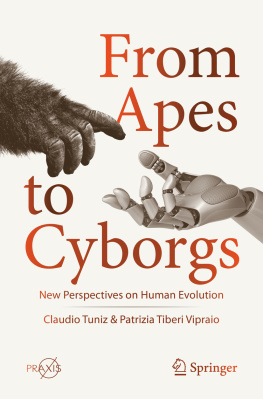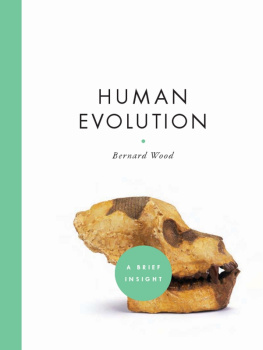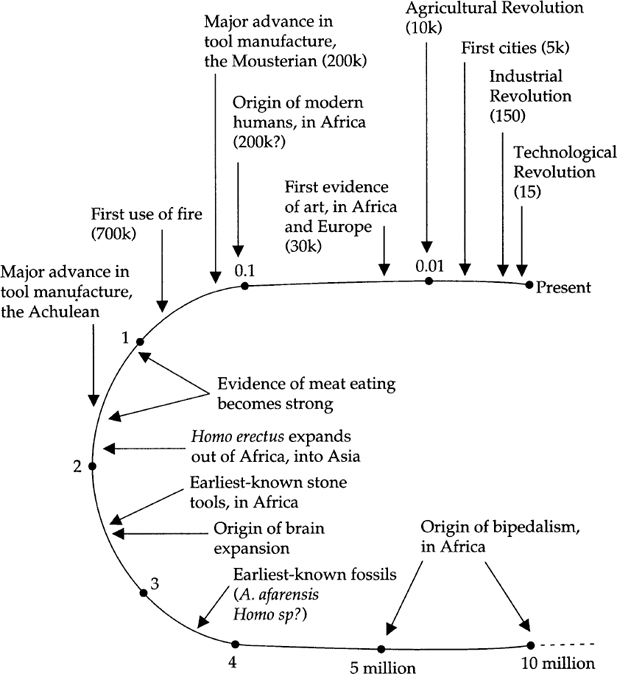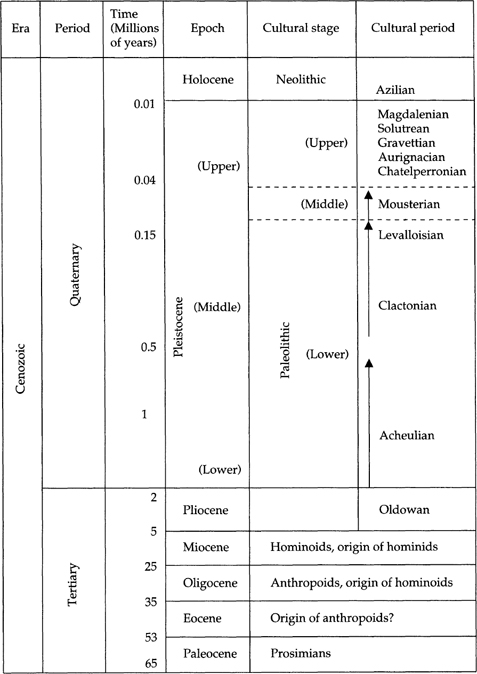The Science Masters Series is a global publishing venture consisting of original science books written by leading scientists and published by a worldwide team of twenty-six publishers assembled by John Brockman. The series was conceived by Anthony Cheetham of Orion Publishers and John Brockman of Brockman Inc., a New York literary agency, and developed in coordination with BasicBooks.
The Science Masters name and marks are owned by and licensed to the publisher by Brockman Inc.
Copyright 1994 by Sherma, B. V. Published by BasicBooks,
A Member of the Perseus Books Group
All rights reserved. Printed in the United States of America. No part of this book may be reproduced in any manner whatsoever without written permission except in the case of brief quotations embodied in critical articles and reviews. For information, address BasicBooks, 10 East 53rd Street, New York, NY 10022-5299.
PREFACE
It is every anthropologists dream to unearth a complete skeleton of an ancient human ancestor. For most of us, however, that dream remains unfulfilled: the vagaries of death, burial, and fossilization conspire to leave a meager, fragmented record of human prehistory. Isolated teeth, single bones, fragments of skulls: for the most part, these are the clues from which the story of human prehistory must be reconstructed. I dont deny the importance of such clues, frustratingly incomplete though they are; without them, there would be little to tell of the story of human prehistory. Nor do I discount the raw excitement of experiencing the physical presence of these modest relics; they are part of our ancestry, linked to us by countless generations of flesh and blood. But the discovery of a complete skeleton remains the ultimate prize.
In 1969, I was blessed with extraordinary good fortune. I had determined to explore the ancient sandstone deposits that make up the vast eastern shore of Lake Turkana, in northern Kenyamy first independent foray into fossil country. I was driven by a strong conviction that major fossil discoveries would be made there, because I had flown over the region in a small plane a year earlier: I recognized that the layered deposits were potential repositories of ancient lifethough many doubted my judgment. The terrain is rugged and the climate unrelentingly hot and dry; moreover, the landscape has the kind of fierce beauty that appeals to me.
With the support of the National Geographic Society, I assembled a small teamincluding Meave Epps, who later became my wifeto explore the region. One morning several days after we had arrived, Meave and I were returning to our camp from a short prospecting excursion, by way of a shortcut along a dry riverbed, both of us thirsty and anxious to avoid the searing heat of midday. Suddenly, I saw directly ahead of us an intact, fossilized skull resting on the orange sand, its eye sockets staring at us blankly. It was unmistakably human in shape. Although the passing years have robbed my memory of exactly what I said to Meave at that instant, I know I expressed a mixture of joy and disbelief at what we had stumbled upon.
The cranium, which I immediately recognized as that of Australopithecus boisei, a long-extinct human species, had only recently emerged from the sediments through which the seasonal river coursed. Exposed to the sunlight for the first time since the elements buried it almost 1.75 million years ago, the specimen was one of the few intact ancient human skulls that had yet been found. Within weeks of its exposure, heavy rains would fill the dry bed with a raging torrent; if Meave and I had not come upon it, the fragile relic would certainly have been destroyed by the flood. The chances of our being there at the right time to recover the long-buried fossil for science were minuscule.
By a curious coincidence, my discovery occurred a decade, almost to the day, after my mother, Mary Leakey, had found a similar cranium at Olduvai Gorge, in Tanzania. (That cranium, however, was a daunting Paleolithic jigsaw puzzle; it had to be reconstructed from hundreds of fragments.) Apparently I had inherited the legendary Leakey luck, enjoyed so notably by Mary and my father, Louis. And indeed my good fortune held, as subsequent expeditions I led to Lake Turkana turned up many more human fossils, including the oldest-known intact cranium of the genus Homo, the branch of the human family that eventually gave rise to modern humans, Homo sapiens.
Although as a youth I had vowed not to become involved in fossil huntingwishing to avoid being in the considerable shadow of my world-famous parentsthe sheer magic of the enterprise drew me into it. The ancient, arid deposits of East Africa that entomb the remains of our ancestors have an undeniable, special beauty, yet they are unforgiving and dangerous, too. The search for fossils and ancient stone tools is often presented as a romantic experience, and it certainly possesses its romantic aspects, but it is a science where the fundamental data have to be recovered hundreds or thousands of miles distant from the comfort of the laboratory. It is a physically challenging and demanding enterprisea logistical operation upon which the safety of peoples lives sometimes depends. I found that I had a talent for organization, for getting things done in the face of difficult personal and physical circumstances. The many important discoveries from the eastern shore of Lake Turkana not only seduced me into a profession I had once vehemently eschewed but also established my reputation in it. Nevertheless, the ultimate dreama complete skeletoncontinued to elude me.
In the late summer of 1984, with our collective breaths held and our steadily building hope tempered by the hard reality of experience, my colleagues and I saw that dream begin to take shape. That year we had decided to explore for the first time the western shore of the lake. On August 23rd, Kamoya Kimeu, my oldest friend and colleague, spotted a small fragment of an ancient cranium lying among pebbles on a slope near a narrow gully that had been sculpted by a seasonal stream. Carefully we began a search for further fragments of the skull and soon found more than we dared hope for. During the five seasons of excavation that followed this find, amounting to more than seven months in the field, our team moved fifteen hundred tons of sediment in the massive search. We uncovered what eventually turned out to be virtually the entire skeleton of an individual who had died at the edge of the ancient lake, more than 1.5 million years ago. Dubbed by us the Turkana boy, he was barely nine years old when he died; the cause of his death remains a mystery.

